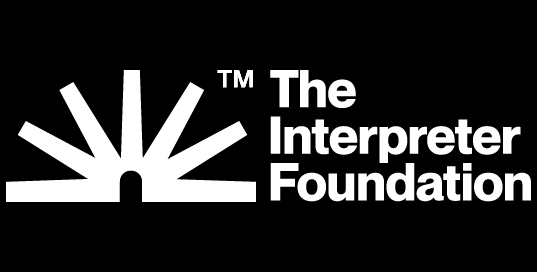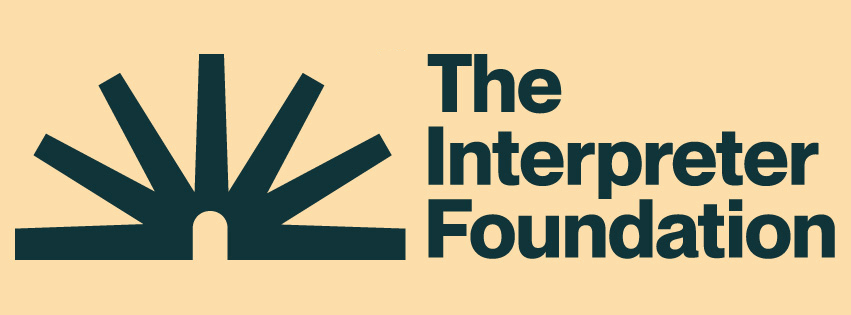[Editor’s Note: Commentaries on the Book of Moses and Genesis Chapters 1 – 10 may be found on the ScripturePlus App from Book of Mormon Central and on the Bible Central website here.]
Genesis 34: Judah’s Three Older Brothers Disqualify Themselves as Leaders
Judah’s rise as a leader among the sons of Leah is a natural aftermath to the disgraceful actions of his three older brothers, Reuben, Simeon, and Levi. In each case, their actions had sprung from a context of sexual sin. Reuben had disqualified himself for the birthright when he “went and lay with Bilhah his father’s concubine” (Genesis 35:22). As a result, his father’s later blessing characterized him as “unstable as water,” and stated his fate starkly: “thou shalt not excel” (Genesis 49:4). Afterward, when the children of Israel began to spread out and occupy the land of Canaan under the leadership of Joshua, Reuben’s tribe dwindled into insignificance.
After Jacob’s only daughter Dinah was defiled by Shechem the Hivite, her father had tried to transform an ugly situation into something more honorable by consenting to a marriage, conditioned on the willingness of the men of the village to undergo circumcision (see Genesis 34:1–24). But in contrast to Jacob’s graciousness and desire to bless the people of Shechem, Simeon and Levi “were very wroth” (Genesis 34:7). Defying the formal agreement their father had made with the Shechemites, Simeon and Levi “took each man his sword, and came upon the city boldly, and slew all the males” (Genesis 34:25). Afterward, Jacob reproached them, saying “Ye have troubled me to make me to stink among the inhabitants of the land” (Genesis 34:30). The later benediction they received from their father was really a malediction — it addressed Simeon and Levi jointly with these words: “Cursed be their anger, for it was fierce; and their wrath, for it was cruel: I will divide them in Jacob, and scatter them in Israel” (Genesis 49:7).[2]
Genesis 35:1–15: Promises to Jacob Made Sure by Divine Confirmation at Beth-el
35:1. Arise, go up to Beth-el and dwell there. Hugh Nibley gives the following by way of preface to Genesis 35:1–15:[3]
Jacob was instructed to resume operations on the site of the temple (Beth-el), settling there and making an altar to the God who had appeared to him and delivered him from the hand of Esau (see Genesis 35:1). He was to establish a holy society, a little Zion on the spot, instructing all his people to renounce the alien gods, wash themselves and change their garments (see Genesis 35:2). Then they were ready: “Let us arise and go up to the house of the Lord, and there I will make a sacrifice to the God who answered me in the day of my distress” (cf. Genesis 35:3). There seemed to be repetitions of this altar building and sacrificing, always for the same reason—at a place where God had appeared and saved Jacob; the same commandments are given to him as were to Adam and Abraham on like occasions (see Genesis 35:7, 9-12).
Significantly, Jewish tradition suggests that this was more than a simple repetition of his previous worship at Beth-el. In contrast to his previous earthly endowment where he received promises at the hands of an angel, Jacob’s previous promises were confirmed or ratified[4] upon him personally by God Himself.[5] In this experience, Jacob’s “name is changed to Israel for the second time”[6] and he is brought into the heavenly temple[7]
The king hath brought me into his chambers (Song of Solomon 1:4): This teaches us that the Holy One, blessed is He, will ultimately show Israel the treasures stored up on high, and the chambers of the firmament. Said R. Jacob: This may be learnt from our father Jacob, for when he said to him, “Arise, go up to Beth-el, and dwell there,” this teaches us that the Holy One, blessed is He, showed him one story above another, and showed him also the chambers of the supernal realms.
35:6. So Jacob came to Luz. Given Jacob’s previous renaming of the sacred location to Beth-el (Genesis 28:19), the second appearance of the alternate place name of Luz in Genesis 35:6 is unexpected, as are the subsequent references to it in Genesis 48:3 and Joshua 18:13. These repeated mentions hint that the importance of “Luz” goes beyond its explicitly stated use as a remembrance of an older place name. In light of the pervasive temple themes throughout story of Jacob—themes that culminate in the present chapter—indulging in some speculation about that possibility might be forgiven. Specifically, remembering the symbolism of the embrace of Jacob and the heavenly messenger in Genesis 32, is it possible that resemblances between Jewish traditions about the symbolism of “Luz” and related Old Testament resurrection motifs to Hugh Nibley’s descriptions of the words exchanged during the embrace of the creator god and the king at the veil in Egyptian ritual literature are not coincidental?
The symbolism of the resurrection and the sacred embrace come together in ancient ideas about the bone of resurrection, called the “luz” bone in Jewish tradition.[8] Most scholars identify this bone with the “sacrum,” a large triangular bone located just above the tailbone. The Latin term os sacrum (= sacred or holy bone) is a direct translation of the Greek hieron osteon.[9] Being a large, dense bone, the sacrum resists decomposition more than other vertebrae.[10] Thus, it was natural to see the sacrum as the starting point for resurrection.[11] In Ezekiel’s vision of the resurrection, revivication begins with the coming together of the dry bones. Afterward, the sinews, flesh, and skin are laid upon them, so they will be ready to receive the breath of life (Ezekiel 37:1–10). In the Ezekiel mural at Dura Europos, a drama that seems to have been re-enacted ritually by Jewish initiates, the breath of life comes into the reassembled bodies through a combination of prophetic speech and sacred gestures.[12]
However, Ezekiel’s version of the resurrection of the dry bones is recent history when compared with Egyptian fragments of the Osiris myth that go back thousands of years earlier. Echoing the symbolism of Jacob’s embrace with the heavenly messenger in Genesis 32 and Joseph Smith’s vision of a resurrection involving a series of handclasps and embraces with family members,[13] Hugh Nibley discusses “the sacred relic, the backbone of Osiris, … the symbol of strength of endurance” that is raised to life in a divine embrace:[14]
You have folded your arms around [Horus] so that his bones expand (with life); … Horus recognizes his father in you,” where the embrace puts life in the bones.
Of course, Nibley recognized that the language used in the Egyptian ritual varied over time, and that only “some of the actual words spoken through the partition”[15] are available in written form. However, what hints we are given indicate that these words are meant to express “‘all life, all endurance, and all power’[16] and, taken together, represent ‘the total fulness of divine gifts’[17] thought to describe the pharaoh in earlier times, but represented as the object of his search and the purpose of the [Egyptian temple] ceremonies in [later] Ptolemaic times.”[18] According to Nibley:[19]
the three signs [of ankh (life), djed (endurance), and was (power)] that appear in the combination as the words of bestowal at the ritual embrace … originally stood for the navel string [ankh], the backbone of Osiris [djed], and his priestly power [was].
Nibley notes that the promises of “health and strength” in the first two Egyptian signs parallel the promises of Proverbs 3:8: “health to thy navel, and marrow to thy bones,” while reminding us that portions of the book of Proverbs are “strongly reminiscent of the Egyptian Wisdom literature.”[20] While the eminent Bible translator Robert Alter finds the mention of the navel “as a focus of bodily well-being” to be “bizarre” and posits a scribal error as an explanation for its appearance,[21] Nibley’s recognition of the umbilical cord as an apt symbol of life in the Egyptian formula makes perfect sense. Thus, André Chouraqui is almost certainly more correct when he translates the term in Proverbs 3:8 as “umbilicus”[22] rather than “navel.”
However, the book of Proverbs is not the only place in Jewish tradition where we find the bestowal of knowledge and power through ritual embraces that are reminiscent of Egyptian ceremonies. For example, Eugene Seaich notes that within the Jewish pseudepigraphal book Joseph and Aseneth, the three gifts given to Aseneth in Egypt from Joseph, son of Jacob, as he kisses her three times[23] “correspond to the three ‘tokens’ (ankh, djed, and was) bestowed in the Egyptian form of the Sacred Embrace,” which Seaich takes as being “obviously patterned after the Embracing Cherubim in the [Jerusalem] Temple.”[24]
Genesis 35:11–15: And God said unto him … nations shall be of thee … and to thy seed after thee will I give the land. Following the name and blessings confirmed on Jacob himself, he receives the sure promise of God that these same blessings will be given to his posterity forever.
Nibley’s citation of the Egyptian rites provides a fitting summary of Jacob’s experience:[25]
“Thou hast strength on earth. Mayest thou be exalted in thy posterity” (lit. those who come after thee).” To this the person responds: “O my posterity! Living souls … who came out of me to take on the flesh of Atum!”
Source Book of Genesis Minute by Jeffrey M. Bradshaw. For further reading, see Nahum M. Sarna, Genesis: The Traditional Hebrew Text with the New JPS Translation Commentary, The JPS Torah Commentary, ed. Nahum M. Sarna (Philadelphia, PA: Jewish Publication Society, 1989), 239–43.
For a brief summary of selected Jewish traditions, see Sugar, “How the sacrum,” 2062. Regarding Islamic traditions, see Ojumah, Naomi, and Marios Loukas. "The intriguing history of the term ‘sacrum’." The Spine Scholar 2, no. 1 (2018): 17–18. https:doi.org/10.26632/ss.6.2018.2.1. (accessed February 28, 2022), 18.
So plain was the vision I actually saw men, before they had ascended from the tomb, as though they were getting up slowly. They took each other by the hand, and it was, “My father and my son, my mother and my daughter, my brother and my sister.” And when the voice calls for the dead to arise, suppose I am laid by the side of my father, what would be the first joy of my heart? Where is my father, my mother my sister? They are by my side. I embrace them, and they me.
For a translation of the “Instruction of Amenenemope” see, for example, Lichtheim, Miriam, ed. 1973-1980. Ancient Egyptian Literature: A Book of Readings. 3 vols. Berkeley, CA: The University of California Press, 2006, The Instruction of Amenemope, 2:146–163. Lichtheim observes, “ever since Adolf Erman pointed [out these parallels] there has been a consensus among scholars on a literary relationship, although some scholars have tried to interpret it in reverse by claiming priority for the Hebrew text, or have proposed to derive both works from a lost Semitic original” (Licthheim, Ancient Egyptian Literature, 2:147). But this hypothesis of reverse dependence or common derivation seems unlikely (Murphy, Roland. The Tree of Life: An Exploration of Biblical Wisdom Literature. The Anchor Bible Reference Library, ed. David Noel Freedman. New York City, NY: Doubleday, 1990, 24).
The Masoretic Text reads shorekha, “your navel,” which sounds bizarre, the navel not being known as a focus of bodily well being. The Septuagint evidently used a Hebrew text that read, far more probably, she’eirkha, “your flesh” [Greek sōmati sou] and it seems likely that the medial aleph was inadvertently dropped in scribal transmission.


